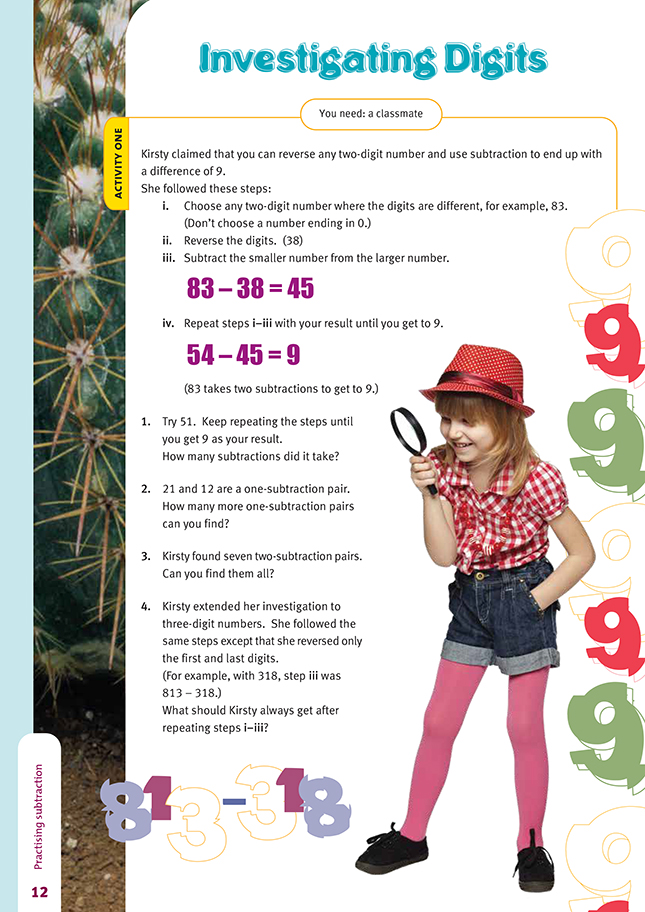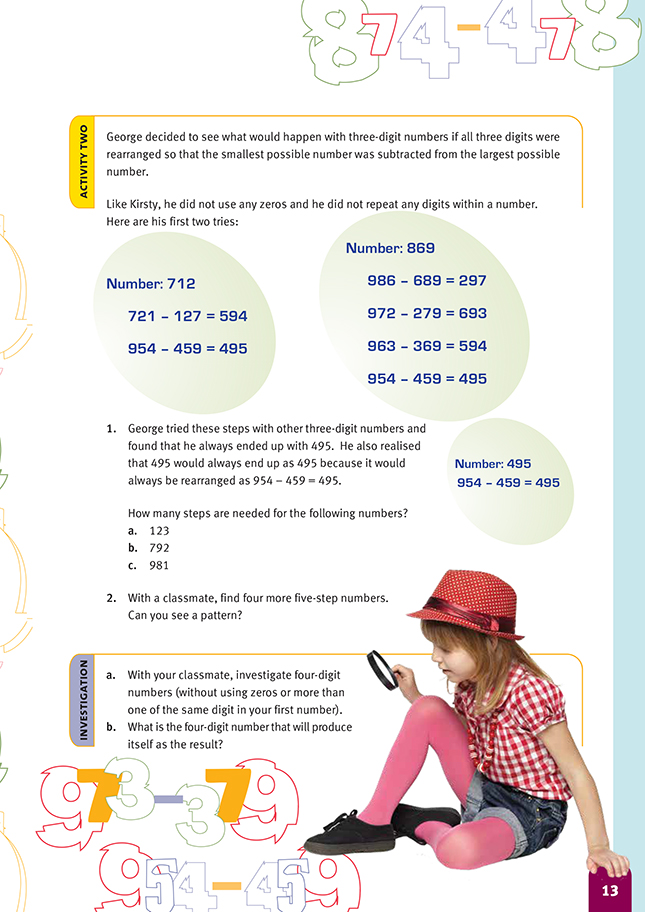This is a level 3 algebra link activity from the Figure It Out series.
A PDF of the student activity is included.
Click on the image to enlarge it. Click again to close. Download PDF (316 KB)
investigate patterns involving subtraction
FIO, Link, Number, Book Five, Investigating Digits, pages 12-13
A classmate
Activities One and Two
Both activities continue the theme of patterns in number. Some astute students may ask, “Why, with twodigit numbers, is the final result always 9?” This is a very good question. You could help the students to recognise that the difference between any reversed pairs of two-digit numbers is always a multiple of 9 (for example, 35 leads to 53 – 35, which is 18; 69 leads to 96 – 69, which is 27; 81 – 18 is 63, and so on), and that finding the difference between reversed pairs of two-digit multiples of 9 (excluding 99) eventually results in 9 itself.
When the students have tackled questions 2 and 3 of Activity One, ask them to share the strategies that they used to determine the number of one-subtraction pairs and to identify the seven two-subtraction pairs. Did they notice, for example, that the one-subtraction pairs all have a difference of 9 and that the difference between the two-subtraction pairs has to be either 45 or 54? A similar approach could be taken with the tasks in Activity Two and the Investigation.
Answers to Activities
Activity One
1. Four subtractions
2. There are seven more, apart from 21 and 12:
32 and 23
43 and 34
54 and 45
65 and 56
76 and 67
87 and 78
98 and 89
3. 61 and 16
72 and 27
83 and 38
94 and 49
71 and 17
82 and 28
93 and 39
4. 99
Activity Two
1. a. Five steps
b. Three steps
c. Four steps
2. Possible five-step numbers are 123, 234, 345, 456, 567, 678, 789 or different arrangements of these numbers (for example, 123, 132, 213, 231, 312, or 321). In five-step numbers, the arrangements of the digits to form the smallest possible number is always consecutive, with reverse consecutive numbers for the largest number. The result from the first step is always 198. (So, numbers that cannot be rearranged as consecutive whole numbers will not be five-step numbers.)
Investigation
a. You should find that all the numbers you try end up as 6 174.
b. When 6 174 is rearranged and subtracted, the result is 6 174.

